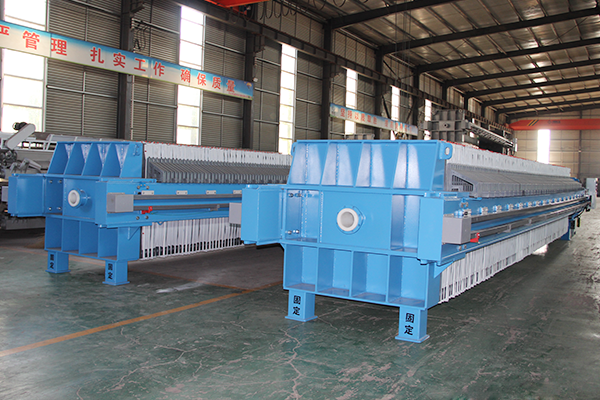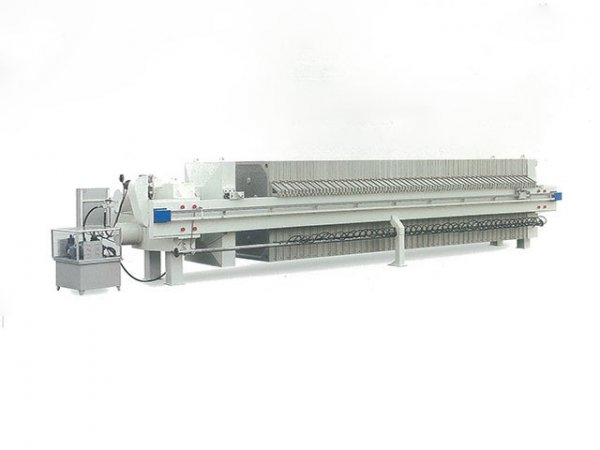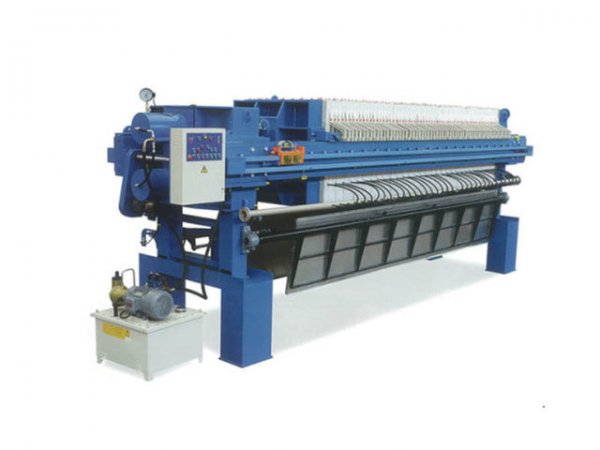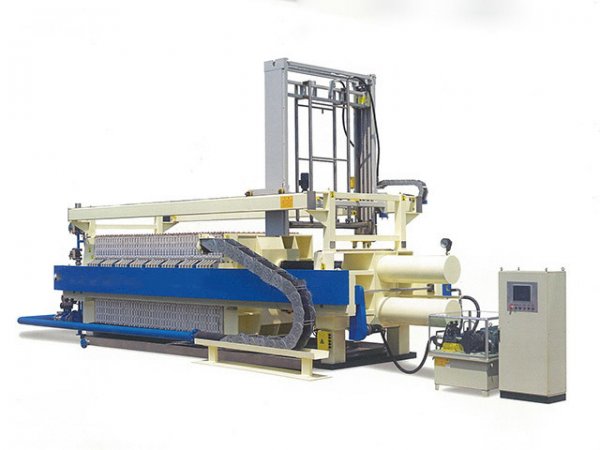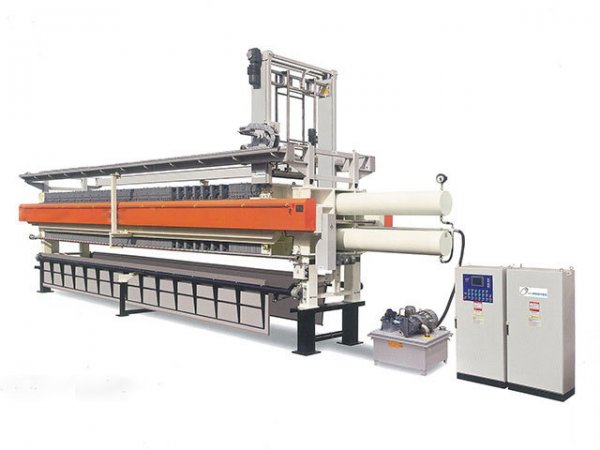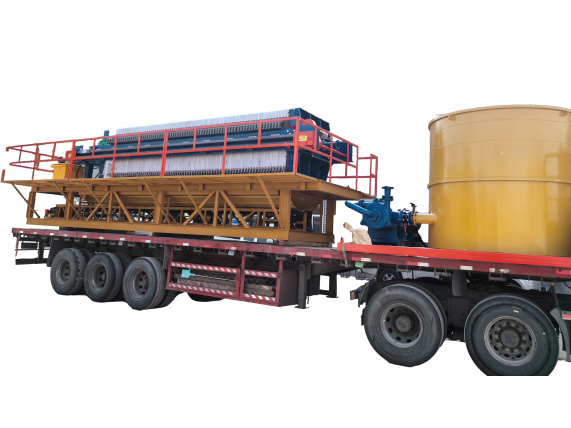NewsDetails
Understanding Hydraulic Filter Press Cycle Time
author:Shuangcheng time:2025-11-18 06:19:29 Click:127
In industrial filtration systems, efficiency is everything. One of the most critical components of that efficiency lies in understanding the hydraulic filter press and, more specifically, how its cycle time influences productivity and final product quality.
This guide explains the key stages of the filtration cycle, the variables that affect performance, and practical methods for optimizing the operation to achieve stable results.
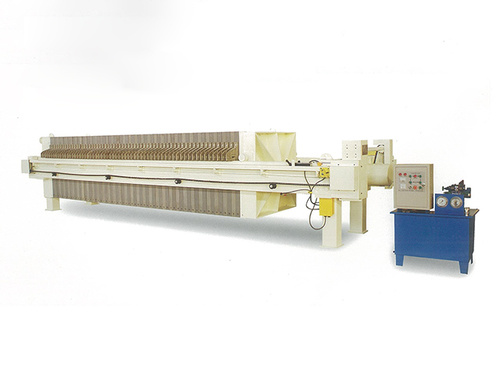

1. What Exactly Is a Hydraulic Filter Press?
A hydraulic filter press is an advanced piece of dewatering equipment designed to separate liquids from solids through pressure filtration. It consists of a series of plates lined with filter cloths that trap solids while allowing filtered liquid (filtrate) to pass through.
Hydraulic pressure is applied to keep these plates sealed tightly together during the process. This strong and even compression ensures clean separation and reliable output, which is why the system is widely used in wastewater treatment, mining, pharmaceuticals, and food processing.
By design, the hydraulic mechanism makes the process faster and more uniform compared to traditional manual or mechanical presses.
2. What Does “Cycle Time” Mean?
When we refer to cycle time, we’re talking about the total time it takes for the machine to complete one full filtration sequence—from slurry filling to cake discharge.
Each cycle typically includes several distinct steps: filling, filtration, cake washing, squeezing, and finally, unloading. Depending on the slurry composition and filtration target, this can take anywhere from 30 minutes to several hours.
In short, cycle time is directly connected to your production efficiency. Reducing it without sacrificing quality can greatly enhance throughput and cost-effectiveness.
3. The Filtration Cycle Explained
a. Filling Phase
The process begins with slurry being pumped into the chambers between filter plates. Hydraulic pressure locks the plates firmly to prevent leaks.
b. Filtration Stage
As pressure builds, liquid passes through the cloths, leaving behind a compact layer of solid material—the filter cake.
c. Cake Washing (If Required)
In some cases, water or another cleaning solution is introduced to wash impurities out of the cake, improving its purity but slightly extending the total cycle time.
d. Squeezing
If your model includes membrane plates, additional pressure is applied to remove excess moisture from the cake, resulting in drier, more manageable solids.
e. Cake Discharge
Finally, the plates open automatically, releasing the finished cakes. The system then resets for the next batch.
4. Key Factors That Affect Cycle Time
The cycle time of a hydraulic filter press doesn’t remain constant—it varies based on several influencing factors:
·Slurry Composition: Thicker or higher-solid slurries take longer to dewater.
·Pressure Levels: Higher hydraulic pressure accelerates filtration but can wear components faster.
·Filter Cloth Condition: Dirty or worn cloths restrict liquid flow and slow the process.
·Plate Design: Deeper chambers hold more slurry, affecting both filtration duration and cake dryness.
·Automation Degree: Automatic plate shifters and discharge systems can dramatically shorten manual downtime.
Understanding and managing these variables helps strike the right balance between efficiency and machine longevity.
5. How to Optimize the Cycle for Maximum Efficiency
Improving cycle time requires a combination of proper setup, regular maintenance, and careful monitoring. Here are proven methods used by experienced manufacturers:
·Fine-tune pressure settings to match the slurry’s viscosity.
·Keep filter cloths clean and replace them at regular intervals.
·Ensure consistent pump feed to maintain even filling and filtration.
·Implement automation for repetitive processes like washing and plate shifting.
·Monitor performance data to identify slowdowns and optimize accordingly.
Even small adjustments can yield measurable improvements in throughput and energy savings.
6. Troubleshooting Cycle Delays
Even with advanced systems, filtration inefficiencies can occur. Below are common issues and their quick fixes:
·Low Filtration Speed: Check for clogged filter cloths or insufficient pressure.
·Uneven Cake Formation: Verify plate alignment and feed flow consistency.
·Wet Cakes: Increase squeeze pressure or extend drying time.
·Air Leaks: Tighten hydraulic seals and check for hose damage.
Routine inspection and preventive maintenance are the best ways to minimize downtime and preserve cycle consistency.
7. The Role of the Manufacturer in Performance and Reliability
Choosing a reliable manufacturer is one of the most important steps in ensuring consistent filtration results. Manufacturers with advanced production capabilities design hydraulic filter presses that maintain stable pressure, uniform alignment, and longer service life.
A well-built press—crafted from precision-machined steel components and durable hydraulic systems—can handle continuous cycles without losing performance. Reputable manufacturers also provide tailored filtration solutions, ensuring your machine fits the exact needs of your material and workflow.
8. Applications Across Industrial Sectors
The hydraulic filter press is used in an array of industries due to its adaptability and reliability:
·Mining & Metallurgy: Dewatering of ore tailings and metal concentrates.
·Chemical & Pharmaceutical: Clarification of process liquids and removal of active residues.
·Food & Beverage: Used in sugar refining, juice clarification, and edible oil filtration.
·Environmental & Waste Management: Efficient sludge dewatering before disposal or recycling.
Each sector demands unique settings, which means understanding and adjusting cycle time is key to maximizing efficiency in any application.
Conclusion
In any production environment, mastering the hydraulic filter press cycle time is crucial for achieving consistent, high-quality output. By understanding each phase of the process, optimizing parameters, and maintaining your equipment regularly, you can dramatically enhance both filtration speed and final product quality.
As an experienced manufacturer with extensive production capacity, we’ve seen how proper cycle management turns ordinary filtration into a precision-driven process that saves time, energy, and cost.
Investing in a well-calibrated, professionally manufactured hydraulic filter press isn’t just about buying machinery—it’s about securing reliability, consistency, and long-term value in every batch you process.
References
GB/T 7714:Treffry-Goatley K, Buchan M I, Rencken G E, et al. The dewatering of sludges using a tubular filter press[J]. Desalination, 1987, 67: 467-479.
MLA:Treffry-Goatley, K., et al. "The dewatering of sludges using a tubular filter press." Desalination 67 (1987): 467-479.
APA:Treffry-Goatley, K., Buchan, M. I., Rencken, G. E., Vortman, W. J., & Buckley, C. A. (1987). The dewatering of sludges using a tubular filter press. Desalination, 67, 467-479.
 Recommended Products
Recommended Products
 Contact us
Contact us
—— Contact:Manager
—— Tel:+86 16632826789
—— Email:sales@hbscfilterpress.com
—— Url:https://www.hbscfilterpress.com
—— Address:West Zone of Economic Development Zone, Fucheng County, Hengshui City, Hebei Province

